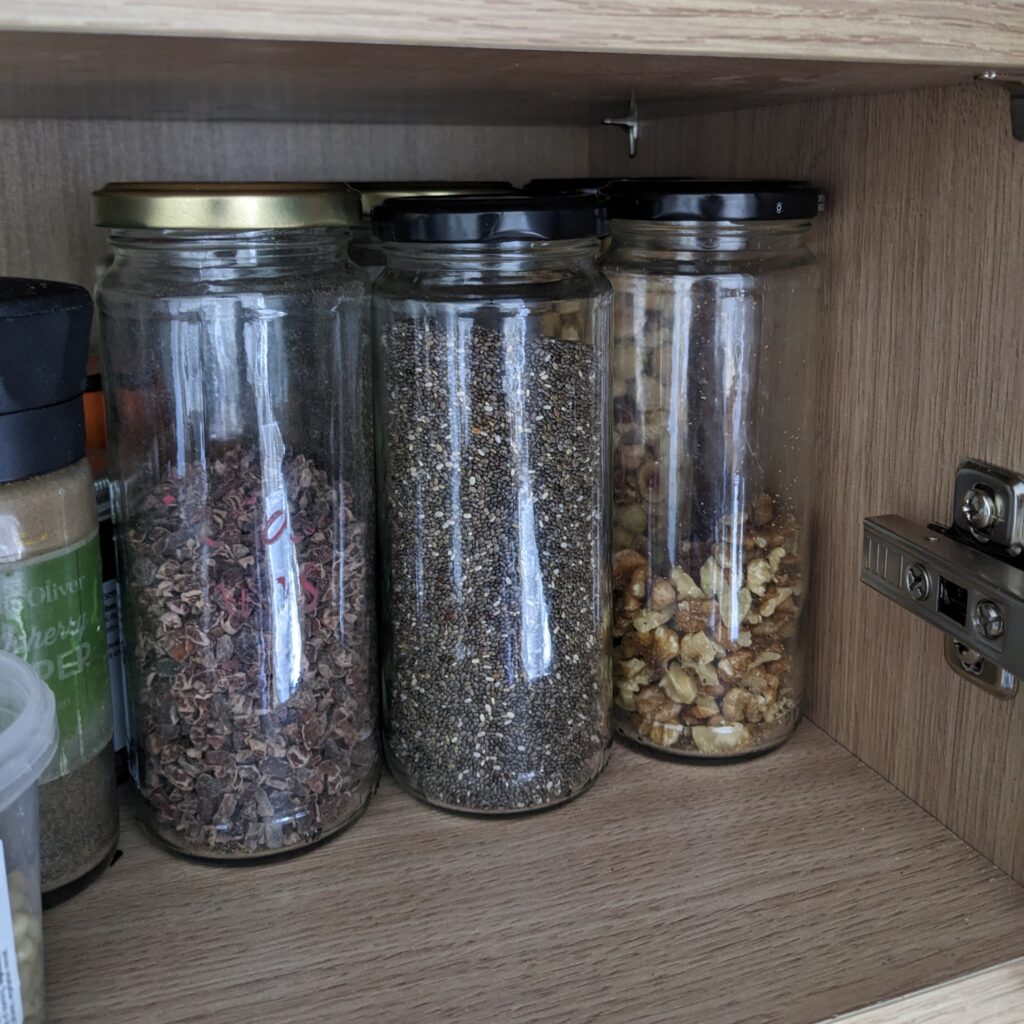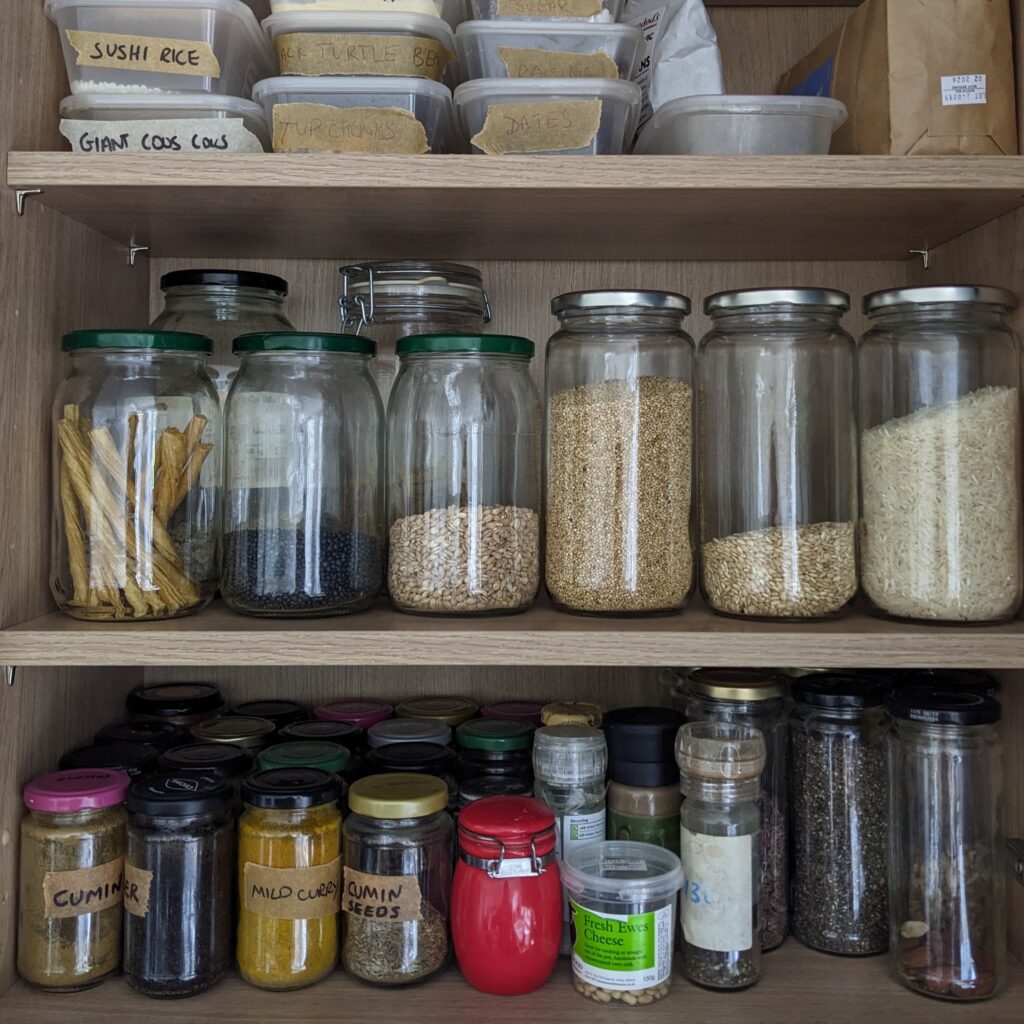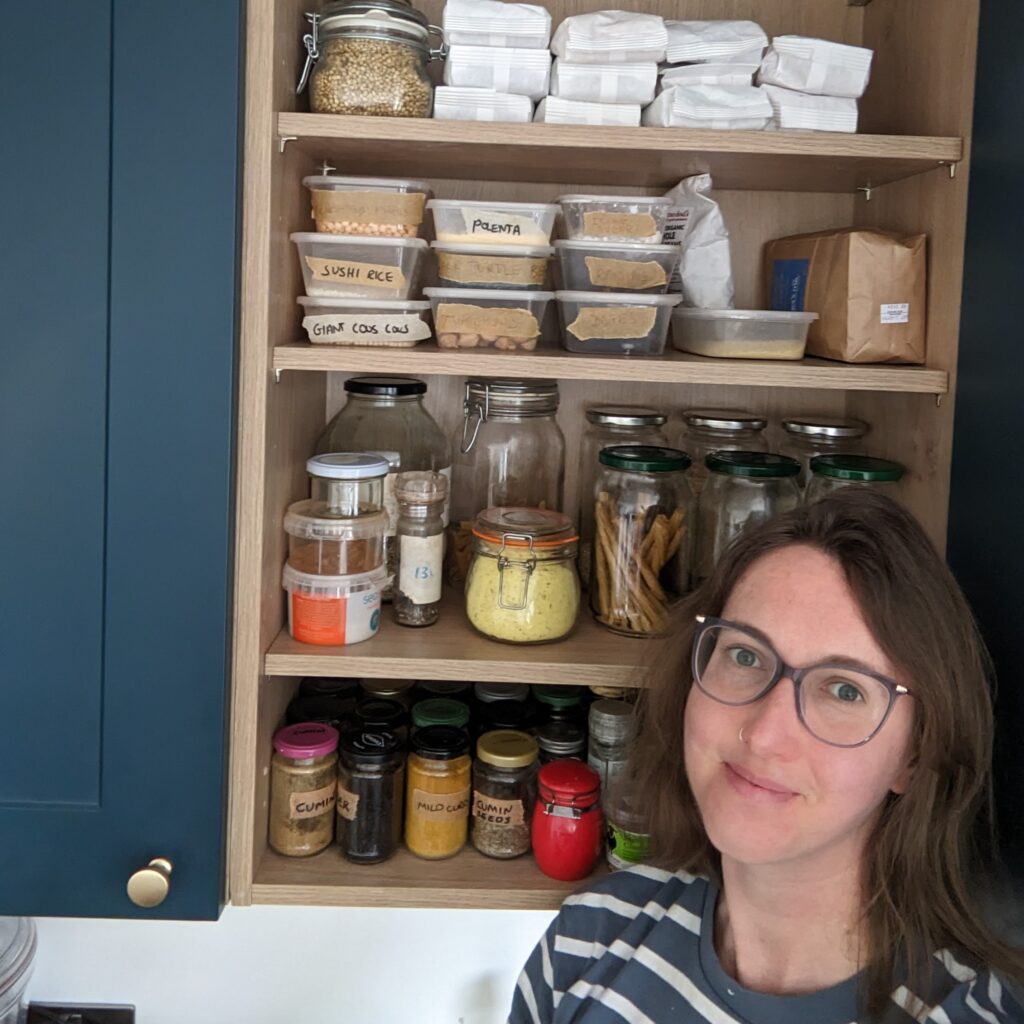
Waste-free refill pantry tour: See inside our cupboards!
As the zero-waste movement has grown and refill shops have become more popular, there are more ingredients than ever available to buy waste-free. You can prioritise pasta, or you can specialise in spices – if you pick just one product to start refilling, you’ll already be helping to reduce pollution.
One of the great things about refilling is that it looks different for everybody. It’s tempting to be sucked in by the aesthetic pantries of social media, but you don’t need to spend loads of money on branded clip-top jars to start refilling; the most waste-free option is to use what you have already.
As owners of a zero-waste refill shop, I (Anwen) am going run through the food items Rob and I refill regularly, what containers we put them in and why. Whether you’re just getting started or you’ve been refilling for a while, hopefully you might just find some inspiration.
First pantry shelf – refill nuts, seeds and spices
I love having a mix of seeds (like chia and ground flax) to top my morning muesli. We always have cashews, which we use in stir fries and biryani, and walnuts and hazelnuts for salads.
I like to keep these in tall, thin, upcycled jars, the kind that are often used for olives. Buying in smaller quantities means I’m more likely to eat the nuts whilst they are still at their most fresh and flavourful.
We often see customers bringing in supermarket spice jars to refill, and it’s great to see these being reused. The downside of these jars is that they often have quite a narrow top, which can make refilling time consuming (and sometimes messy). I have a collection of slightly larger-mouthed jars that are much quicker and easier to refill

Second pantry shelf – Waste-free pulses and grains
On this shelf, I keep the pulses and grains we are most likely to use every week. For us, this includes white basmati rice, pasta, quinoa, and dried lentils (which are quicker to cook than dried beans).
In this section we have a mix of upcycled jars and larger jars that we bought specifically for refilling. Because we cook with these ingredients all the time, we know we will get through them quickly and so it was worth investing in containers that allow us to buy larger amounts.

Third pantry shelf – more pulses and grains!
Here we have the pulses and grains that I personally cook with less often. I use sushi rice and black rice for quite specific dishes, like poke and grain bowls. Because dried beans need soaking and take longer to cook, I don’t cook with these quite as often as lentils.
For these ingredients, we use reused take-away containers. Although the scale of plastic pollution caused by these containers is distressing to think about, from a refilling perspective they do have some useful properties. They are light and reasonably durable. For most grains and pulses, they hold approximately four portions. In the cupboard, they stack nicely and can be labelled so it’s easy to see at a glance what you have.

Fourth (top) shelf – an experiment
This year, I’ve been spending a lot of time learning more about cooking dried pulses from scratch. As part of this journey, I invested in a Hodmedod Big Bundle of British Pulses, which I am slowly working my way through. I was really happy that the pulses came in paper bags, and love that everything in the bundle was grown right here in the UK.
Hopefully this pantry tour has helped get you excited about the range of delicious wholefoods that you can buy waste-free. The jars we use shows that you don’t need a completely perfect matching set to get started. You can literally use anything, and you can start today!
Interested in learning more about cooking pulses from scratch? Check out our recent blog here.
